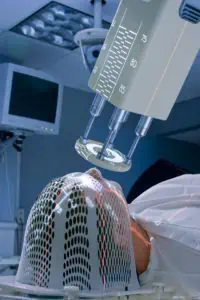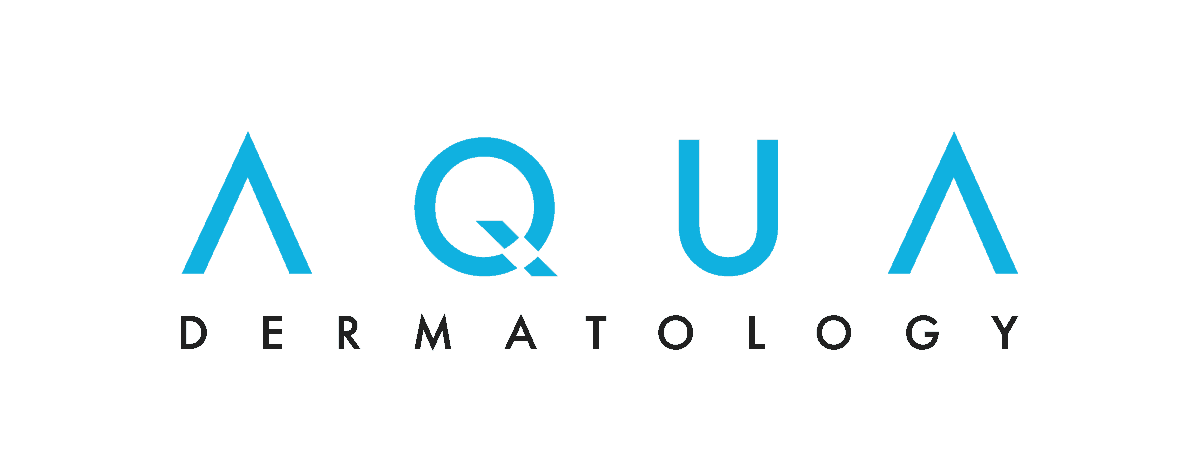
Medical Review By: David Herold, MD, MBA
Learning you have skin cancer can be a shock. The disease is rarely fatal, but many people worry about the effects treatment could have on their appearance, particularly if they have skin cancer on the face.
Scars from skin cancer surgery can be very noticeable and even disfiguring in some cases. But radiation therapy can remove many skin cancers just as effectively as surgery, without the risk of scarring.
“Unfortunately, patients who are diagnosed with some of the most common forms of skin cancer, such as basal cell and squamous cell carcinoma, are often told they need surgery and aren’t informed that there are other options,” said David Herold, MD, MBA, a board-certified radiation oncologist at Water’s Edge Dermatology. “Many of these patients could get better cosmetic results with radiation therapy, particularly if the lesions are on their face.”
What is radiation therapy?
When you undergo radiation therapy for skin cancer, a beam of low-energy rays (such as x-rays) or particles such as electrons is aimed at the treatment area for a set period time. These rays or particles break apart the DNA in cancer cells, ultimately killing the cells. While some healthy surrounding cells may be damaged in the process, it isn’t a cause for concern.
“Healthy cells have incredible repair mechanisms, and they start healing themselves seconds after treatment,” Dr. Herold said. “Cancer cells die because they’re unable to repair themselves from the effects of radiation.”
Radiation therapy is sometimes confused with chemotherapy, but the two treatments are nothing alike. Radiation therapy is delivered externally and penetrates only as far as the skin, so there are few or no side effects. Chemotherapy is administered internally, either intravenously or orally. It affects the whole body and can lead to side effects such as nausea and hair loss.
Types of radiation therapy for skin cancer
Superficial radiation therapy (SRT) uses a beam of low-energy x-rays to destroy cancer cells. A newer, more versatile type of radiation therapy is electron beam therapy (EBT), which uses a very thin, non-penetrating electron beam.
Dr. Herold specializes in EBT. Water’s Edge Dermatology is one of the few dermatology practices in Florida that offer it.
Advantages of electron beam therapy
EBT for skin cancer offers several advantages over SRT for skin cancer.
“Electron beam therapy can treat larger skin cancer lesions on the face and head compared to SRT, such as big lesions that appear on the scalp,” said Dr. Herold. “It also treats deeper skin cancers without causing irritation or pain in the cartilage or bone beneath the lesion, which happens sometimes if you use a higher dose of SRT to treat a deeper skin cancer.”
Another major advantage of EBT is that it more effectively treats lesions on irregular skin surfaces, such as the tip of the nose or curved areas of the ear. “SRT uses a flat beam that doesn’t work as well on areas like these,” Dr. Herold said.
EBT is the better radiation therapy for basal cell carcinoma of the nose as well as squamous cell carcinoma of the nose.
Who can get electron beam therapy?
This form of radiation therapy is most often used to treat basal cell carcinoma (the most common type of skin cancer) and squamous cell carcinoma (the second most common type of skin cancer).
According to Dr. Herold, EBT is used as a stand-alone treatment in 95% of cases but is occasionally used after surgery to clear any margins (the border of the tissue removed during surgery) that contain cancer cells. The cure rate of EBT for skin cancer — 90% to 98%, depending on the location of the lesion — is equivalent to that of skin cancer surgery, he added.
EBT isn’t recommended as a standalone treatment for melanoma except in some cases of melanoma in situ (stage 0). Stage 0 means the cancer hasn’t spread beyond the outermost layer of skin. EBT can also be used to treat a rare type of cancer called cutaneous lymphoma, a group of lymphomas that start in the lymph system and affect the skin.
While EBT can treat skin cancer lesions on any area of the body, it’s most commonly used to treat skin cancer on the face to avoid serious scarring and resulting complications.
“Surgically removing lesions on the face can sometimes lead to terrible outcomes,” Dr. Herold said. “I’ve seen patients who had surgery on their nose or eyelid who are now missing the tip of their nose or who can’t close their eye completely, which wouldn’t have happened if they’d had radiation therapy.”
What happens during an EBT session
Undergoing EBT for skin cancer on the face is quite simple. Before your treatment sessions start, your doctor will make a mold of your face and the sides and top of your head to create a plastic mesh mask you’ll wear during each session to keep your head and neck stationary. A piece of lead in the shape of the lesion is placed on the lesion to prevent electrons from scattering to nearby healthy skin.
You’ll be instructed to lie down on a table beneath the machine that delivers the electron beam, called a linear accelerator. The beam is aimed at the lesion for about 90 seconds. All told, the appointment takes less than 5 minutes.
“EBT is painless, so there’s no need to numb the skin beforehand,” Dr. Herold explained. “Patients may experience some redness in the treated area after a session, so I advise them to apply Aquaphor or a prescription cream to help with healing.” Patients can resume their normal activities (working, swimming, exercising) immediately after treatment.
While sessions are very quick, you do have to get them five days a week for anywhere from two weeks to six weeks. How long you undergo treatment depends on several factors, such as the location of the cancer:
- Small lesion on the cheek: two weeks
- Lesion on the ear: four or six weeks, depending on the size
- Large scalp lesion: four or six weeks
- Tip of the nose: six weeks
Once you’ve completed your sessions, the treated area will heal in one to three weeks. In some cases, radiation therapy for skin cancer can lead to loss of pigment in the area, but the effect is subtle (if it occurs at all) with EBT because the doses of radiation are so low.
“Most people who receive EBT look like they never got any kind of treatment,” Dr. Herold said.
“I’m very dedicated to educating patients about the procedure because they should be able to make an informed decision about how they want to be treated, and surgery isn’t always the best choice,” he added.
Article Written By: Jessica Brown, a health and science writer/editor based in Brooklyn, New York. She has written for Prevention magazine, jnj.com, BCRF.org, and many other outlets.





